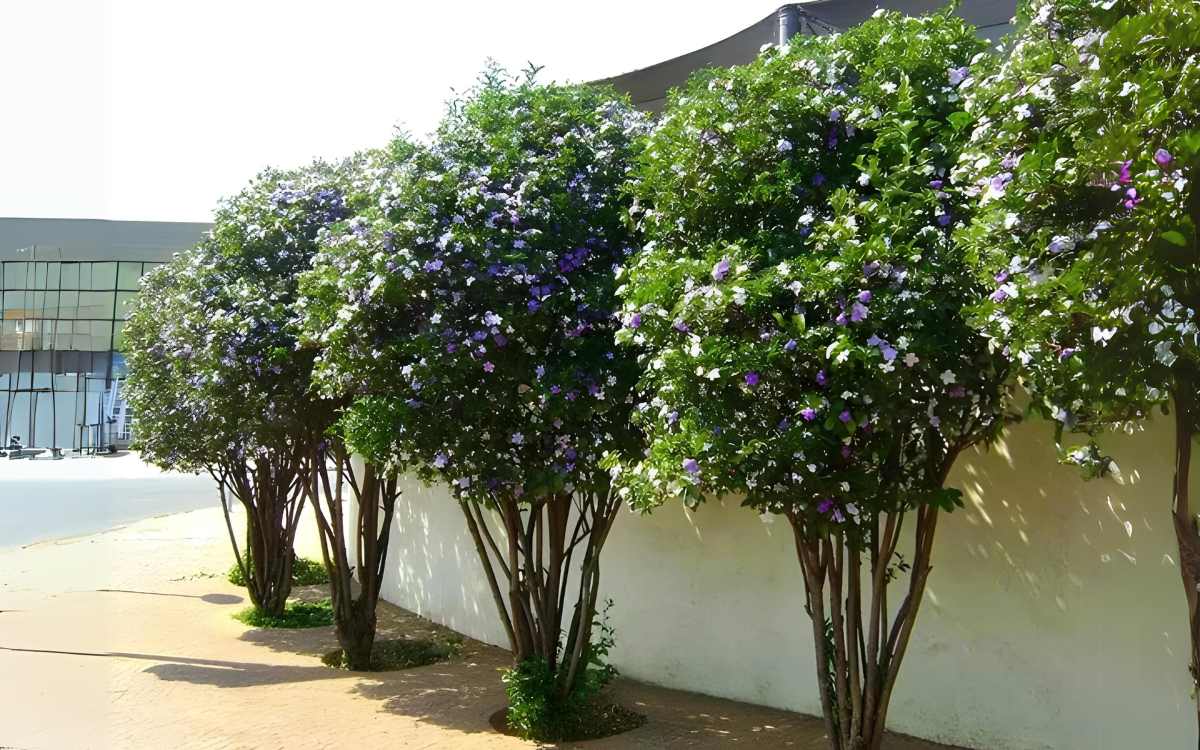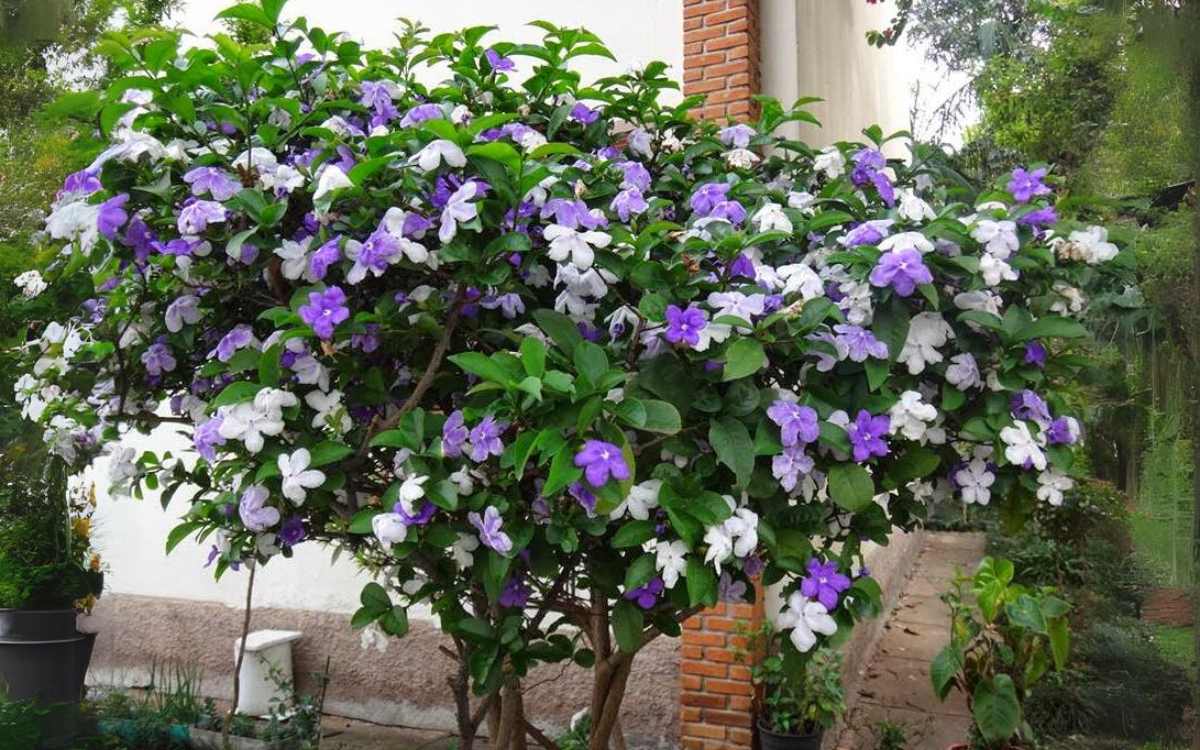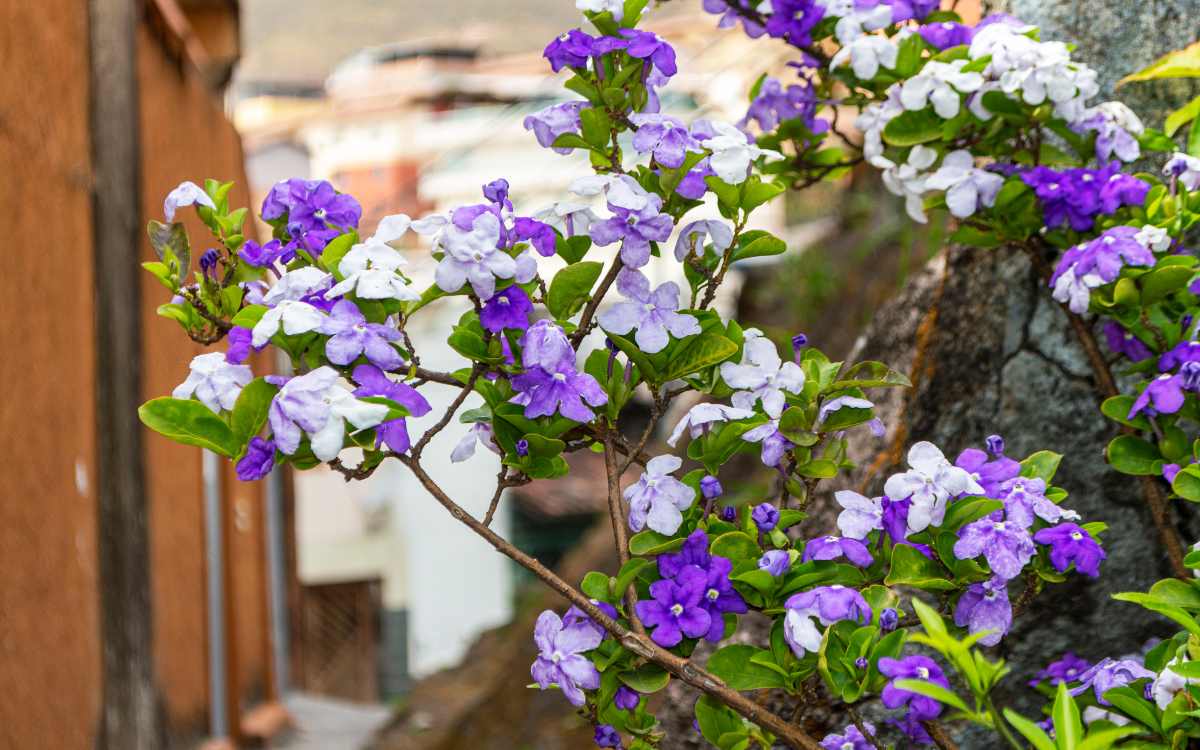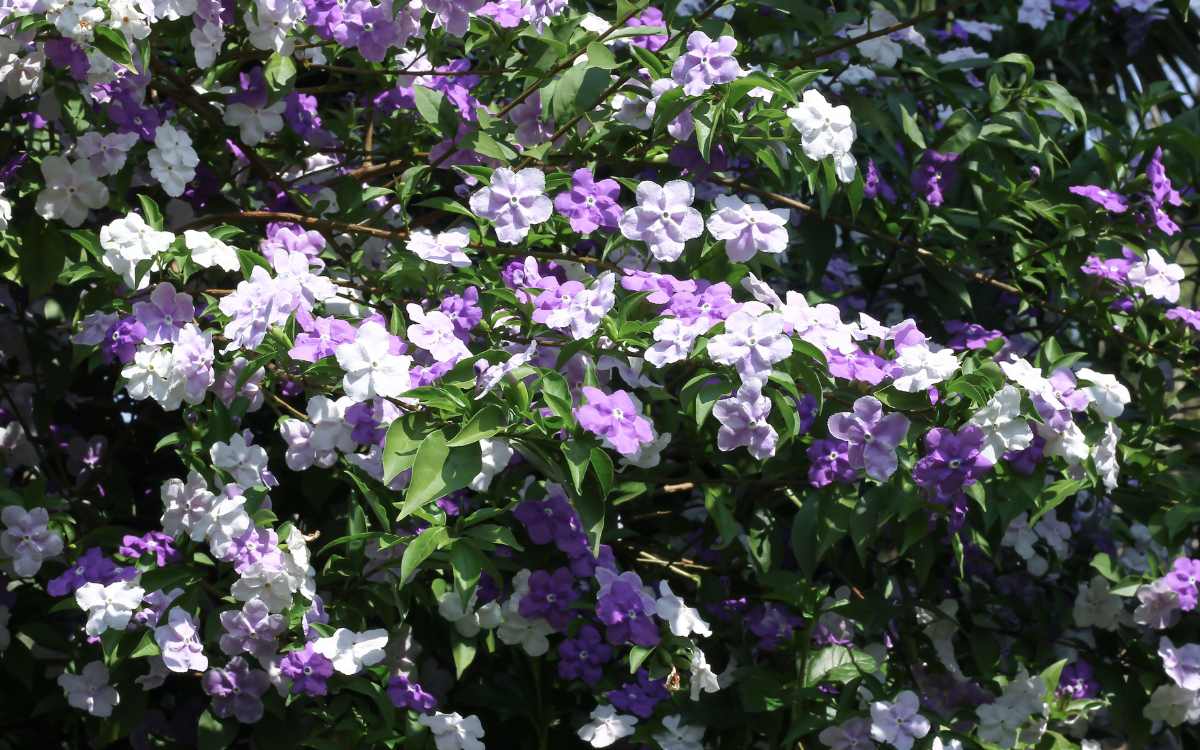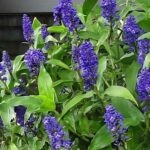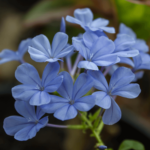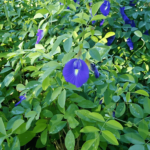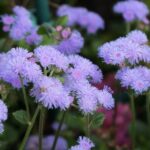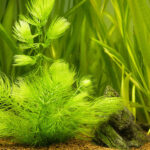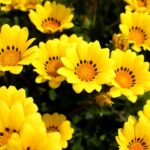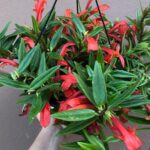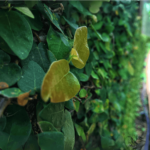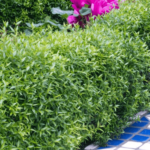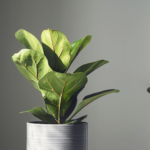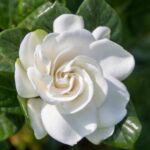The Manacá (Brunfelsia uniflora) is a native plant from South America, notable for its color-changing flowers and pleasant aroma.
Its flowers bloom in shades of purple/blue and gradually change to white.
The gentle and pleasant aroma of Manacá is another distinctive feature, which intensifies during the night and early morning hours.
In terms of cultivation, Manacá is adaptable but has specific requirements to fully thrive.
If you want to learn how to properly cultivate this plant, then keep reading.
Where and How to Plant It
To plant Manacá, it is essential to choose a location that meets its light and soil needs.
The plant blooms best when exposed to full sun or in partial shade conditions. This means it can be cultivated in areas that receive direct sunlight for most of the day or in locations that offer some protection against the intense midday sun.
The ideal soil for Manacá should be fertile and well-drained.
The plant does not tolerate waterlogged soils, so proper drainage is crucial to prevent root rot.
Enriching the soil with organic matter, such as compost or humus, is vital.
Before planting, it is advisable to plow or till the soil to a depth of at least 30 to 40 centimeters, incorporating organic material as needed.
Planting
The best time to plant Manacá is during spring or early autumn.
This allows the plant to establish itself under more temperate weather conditions, facilitating root development before the extreme temperatures of summer or winter.
When planting, create a hole that is just slightly larger than the plant’s root ball. Place the plant in the hole carefully to avoid damaging the roots and fill the surrounding space with the previously prepared soil.
Gently compact the soil around the base of the plant to eliminate air pockets and ensure firm contact between the roots and the soil.
Spacing and Initial Care
Maintain adequate distance between plants, usually about 1 to 2 meters, to allow for healthy growth and adequate air circulation, thus preventing the emergence of fungal diseases.
After planting, proper watering is essential to establish the plant.
In the first days, keep the soil moist, but not saturated, adjusting the watering frequency according to weather conditions and soil type.
Also check out these other flowering plants to add to your garden:
- Blue Ginger
- Gardenia
- Gazania
- Blood Lily (Scadoxus Multiflorus)
- Congea Tomentosa (Wooly Congea)
- Clitoria Ternatea (Butterfly Pea)
Ideal Climate for Manacá
Manacá originates from South America, a region known for its predominantly tropical climate. This climate context provides important clues about the plant’s temperature and humidity preferences:
Temperature
Manacá thrives in warm climates, where temperatures are consistently high during the day and mild at night.
The plant can tolerate temperature variations, but ideal conditions include daytime temperatures that rarely fall below 15°C (59°F).
It may be sensitive to frost, so in colder regions, protective measures or controlled environment cultivation may be necessary during the colder months.
Humidity
Being a tropical climate plant, Manacá benefits from a humid environment.
Humidity not only contributes to better plant development but also enhances the production of its characteristic fragrances.
Lighting
The plant requires plenty of light to bloom, preferring sunny locations or partial shade.
Direct sunlight is ideal, especially in climates that are not excessively hot, while a bit of shade can be beneficial in areas with intense sun and high temperatures during the middle of the day.
Ventilation
Good air circulation helps prevent fungal diseases, which can be more prevalent in humid and poorly ventilated environments.
Maintaining adequate distance between plants and ensuring they are not crowded by other vegetation or structures is vital for the overall health of Manacá.
Ideal Soil
Manacá thrives in soils that have two main characteristics: good drainage and richness in organic matter. Here are details about each of these aspects:
- Good Drainage: The soil must allow water to drain freely to avoid waterlogging, which can lead to root rot. Clay soils, which retain a lot of moisture, are generally not suitable unless they are modified to improve drainage.
- Rich in Organic Matter: The addition of organic compounds such as compost or humus benefits this plant. These materials not only enrich the soil with essential nutrients but also help improve its structure, increasing porosity and consequently, drainage. Organic matter also helps retain necessary moisture, offering an ideal balance between water retention and drainage.
How to Water
In the days following the planting of Manacá, watering should be a priority to ensure the establishment of the roots.
During this initial period, the soil around the roots should be kept uniformly moist (but not waterlogged), to support the early development of the plant and assist in its adaptation to the new environment.
- Frequency: Water the plant daily if the weather is dry and hot. In colder or cloudy climates, the frequency can be reduced.
- Quantity: Provide enough water to moisten the soil to a depth of about 15 to 20 cm, which generally corresponds to deeper and less frequent watering, avoiding wetting the leaves to reduce the risk of diseases.
Watering After the Plant Is Established
Once Manacá is established, its watering needs will change.
The plant is relatively drought-resistant, so it does not require constant watering, but it is important to monitor soil conditions and the weather to determine the need for water.
Before deciding to water, check the soil moisture by inserting a finger a few centimeters deep. If the soil is dry at this point, it is time to water.
In hot and humid climates, Manacá may need more water, especially during prolonged periods of drought or extreme heat. However, in colder climates or during the rainy season, watering can be significantly reduced.
How to Fertilize
For Manacá, a balanced fertilizer rich in phosphorus is recommended.
Phosphorus is a crucial element for flower development, and its adequate presence can encourage a more robust and colorful flowering.
Balanced fertilizers usually have an NPK ratio (nitrogen, phosphorus, potassium) that supports both foliage growth and floral development, such as 10-10-10 or 20-20-20 formulations.
When applying fertilizer, follow these tips:
- Always follow the manufacturer’s instructions for dosage and frequency of fertilizer application.
- Spread the fertilizer evenly around the base of the plant. Avoid direct contact of the fertilizer with the stem or leaves, as this can cause chemical burns.
- After applying the fertilizer, water the plant deeply. Water will help dissolve the fertilizer and carry it into the soil, facilitating nutrient absorption by the roots.
Avoiding excessive fertilization is crucial, as nutrient buildup can lead to root burn, reduce flowering, or even cause severe damage to the plant.
If you notice signs of over-fertilization, such as burned leaf tips or abnormally slow growth, reduce the amount of fertilizer and increase the frequency of watering to help flush out excess nutrients.
Here are some more plants you might be interested in growing:
Propagation
There are two main techniques for propagating Manacá: through seeds and cuttings. Each method has its particularities and can be chosen based on the cultivator’s preferences or the availability of planting material.
Propagation by Seeds
- Seed Collection: Seeds of Manacá should be collected after fruiting, when the fruits are ripe. Seeds need to be cleaned and dried before planting.
- Soil Preparation: Use rich and well-drained soil, ideally mixed with organic matter such as compost or humus. This ensures that the seeds have access to necessary nutrients from the beginning.
- Sowing: Plant the seeds in germination trays or directly in small pots. Cover them lightly with a thin layer of soil. It is ideal to keep the seeds in a controlled environment, where temperature and humidity can be kept constant.
- Germination Conditions: Keep the soil consistently moist (but not waterlogged) and in a place that offers warmth and good lighting, but without direct sunlight. Germination usually occurs within a few weeks, depending on temperature and humidity conditions.
Propagation by Cuttings
- Cutting Selection: Choose healthy shoots or lateral branches that are growing at the base of the mother plant. It is preferable to select cuttings that have already developed their own root system.
- Transplanting: Cuttings can be transplanted directly to the final location in the garden or into larger pots. Ensure that the soil is well prepared, as previously described, to receive the cuttings.
- Post-Transplant Care: After transplanting, water the cuttings regularly to keep the soil moist until they are well established. Monitor growth and adjust care as necessary, including shading or protection against extreme weather conditions.
Pruning and Maintenance
Perform pruning after flowering, removing dry, damaged, or disordered branches. This encourages the plant to produce new shoots and flowers, revitalizing its appearance and vigor.
Problems With Diseases
Excessive moisture is one of the main causes of fungal diseases in many plants, including Manacá. Fungi can cause a variety of symptoms, such as leaf spots, root rot, and general plant decline.
The best way to prevent fungal diseases is to avoid overwatering.
Ensure that the soil is well-drained and avoid excessive watering, focusing the water directly on the roots rather than the leaves. Maintaining good air circulation among the plants also helps reduce moisture on the leaves and branches.
If signs of fungus appear, reduce watering and remove affected parts of the plant. Appropriate fungicides, preferably organic, can be applied strictly following the manufacturer’s recommendations.
Problems With Pests
Among the pests, the Manacá butterflies and their larvae are notable. Although they are part of the natural ecosystem and generally do not cause severe damage, they can be an aesthetic issue as they feed on the leaves.
Regularly observing the presence of these larvae and manually removing them may be sufficient to control small infestations. In cases of more intense attacks, the use of specific insecticides may be necessary, always choosing products that are safe for the environment and other beneficial insects.
Aphids and scale insects can also occasionally infest Manacá. These sap-sucking pests weaken the plant and can excrete a sticky substance (honeydew) that attracts ants and can promote the growth of sooty mold.
Natural insecticides such as potassium soap or neem oil are effective against these pests and can be applied as needed, respecting dilution and application instructions to avoid plant damage.


